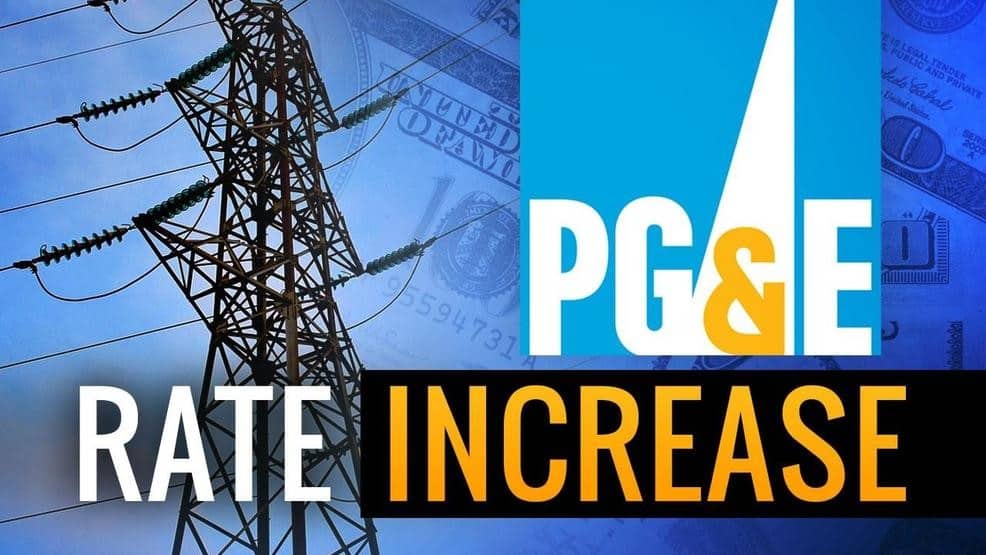
In January 2023, PG&E implemented a rate increase of 8%, marking a significant rise in costs for most Californians. These changes took effect on March 1, 2023, signaling a trend toward escalating utility bills in the years to come—a challenging prospect for residents already dealing with some of the highest energy costs in the nation.
The situation continues to evolve into 2024, with another rate adjustment commencing on January 1. This time, residential customers are facing an approximate increase of $32.62 in their monthly bills, reflecting a 12.8% hike from previous rates. These adjustments are part of PG&E’s broader strategy to enhance infrastructure resilience against wildfires and accommodate the growing energy demands of the state.
Understanding these ongoing changes is crucial as they impact every household’s budget. While the rising costs are inevitable, being informed can help you manage their effects more effectively. For more detailed insights into the rate changes and their implications, stay tuned to updates from the CPUC’s website and local news sources like the SF Standard.
But First, Why The Upheaval In Rates?
According to Paul Doherty, PG&E spokesperson, the rate increases are due to:
- The cost of maintaining aging infrastructure
- Paying off debt accrued during the California energy crisis
- Cost overruns from the new natural gas pipeline construction
- Upgrades to the safety and electricity grid
- Rising natural gas and wholesale electric energy prices
The recent drought, which reduced lower-cost hydroelectric generation in the Western United States, also contributed to the price bumps.
Add in Fines Levied For Causing Wildfires
October 22, 2017: Federal investigators determined that PG&E’s faulty electrical equipment was responsible for several 2017 wildfires in Northern California.
June 6, 2018: A California judge ordered PG&E to pay $1 billion in civil penalties for starting some of California’s worst wildfires over six years.
In addition, the fires damaged infrastructure, including power lines, further increasing PG&E’s cost of providing service. They also had to buy tons of natural gas and other materials required to fight the fires.
Naturally, this burden will pass on to PG&E’s consumers.
How Do Rate Increases Affect You?
The spike in electricity cost will affect all PG&E customers, but it won’t be a simple across-the-board percentage hike.
These changes mean your electric bill will go up no matter which plan you choose—the tier you select will determine whether your bill goes up by $5 or $25 per month.
Using PG&E’s estimate, the average residential customer will see an increase of $14 on their electric bill each month. This calculation also takes into account the benefit from the California Climate Credit.
According to PG&E, your average monthly electric bill of $152 is set to increase by $14, resulting in a new total of $166 a month. That works out to a 9.2% increase.
On the other hand, subscribers under the Customer Assistance Rates (CARE) program are looking at an increase of around 11.7% in monthly bills, equivalent to $10.66 a month.
What Can You Do?
Frankly, there’s nothing you can do about PG&E raising prices. So, maybe the more appropriate question is: How will people deal with higher rates?
Ways To Cope With Higher Electric Bills
- Switch to a lower plan
- Reduce consumption
- Switch to a different provider
- Apply for income-based subsidies
- Participate in programs by local utility agencies. The Local Agency Service Option (LASO) offers discounted electricity and gas to low-income families and individuals on Medi-Cal.
- Check your eligibility to avail of PG&E’s additional discounts through its CARE program.
If you have some savings stashed away, then switching to solar energy might be the solution to rising electricity costs. Over time, you can invest in a solar panel system and reap the benefits, including tax rebates.
Moving Forward
While it’s tough to say how long consumers will be affected by the PG&E rate increases, one thing is certain: no utility company wants its customers to be burdened by increasing prices.
If recent history has shown us anything, companies like PG&E are likely to turn toward new energy sources to reduce operational costs. And, of course, make electricity more affordable for regular consumers.
In the coming years, we might see further developments in renewable energy technologies which PG&E might utilize.
Meantime, you can act on one or more of the suggestions we enumerated above.
And if you can afford it, switching to solar energy as your main power source is highly recommended. The World Energy Outlook 2020 report of the International Energy Agency states that “solar power is now the cheapest electricity in history.”
Regardless of how you deal with rising electricity bills, be sure to do it sooner rather than later. The longer you wait, the less you save.
Find out how much it will cost you to switch to solar with our instant quote calculator here.

Authored by Ryan Douglas
NRG Clean Power's resident writer and solar enthusiast, Ryan Douglas covers all things related to the clean energy industry.

